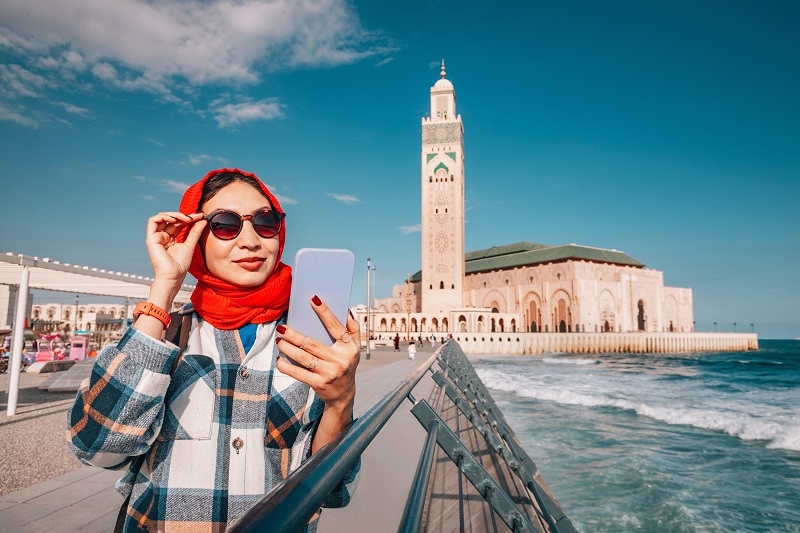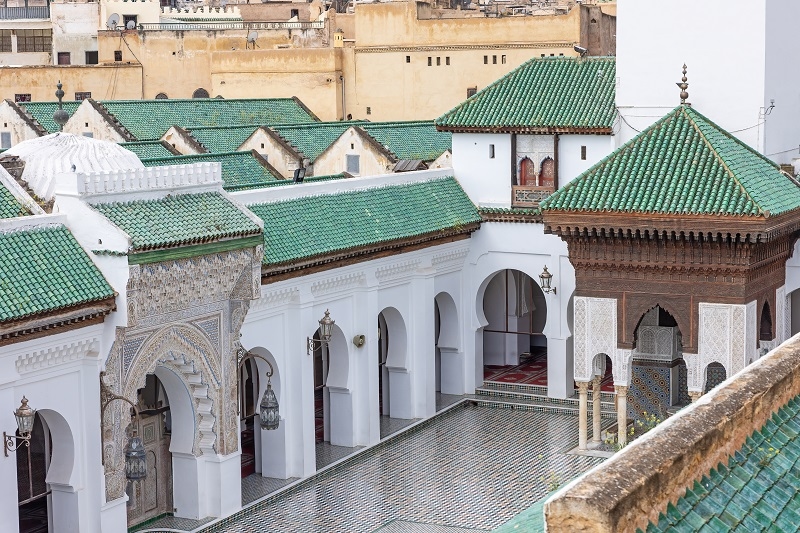
Morocco is a land that grabs your mind with its bright lanes, old towns, and kind people. From the maze-like old parts of Marrakech to the wide dunes of the Sahara, Morocco shows a mix of Arab, Berber, African, and European styles that make it one of the most full-of-life places on Earth. If you like old buildings, ways of life, art, or food, Morocco gives you an unmatched thing to see.
If you're fixing up your next trip and want to fill up on history, color, and way of life, this Morocco travel guide for culture lovers will tell why this place should be high on your must-see list.
Marrakech is a key city in Morocco and a hot spot of culture. Loved for its bright life and old feel, the city has kings' homes, prayer places, gardens, and winding paths full of shops (markets).
Top things to do in Marrakech are to see the Bahia King's house, walk the Majorelle Garden, and feel the life of the Jemaa el-Fnaa area, more so after the sun goes down. Street acts, food people, and music men turn the spot into a live show each night.
With this Morocco guide for culture lovers, plan to stay at least two full days in Marrakech to downright love its great building work and Moroccan life ways.
Morocco's old city parts are cities in cities—walled, old areas full of past and charm. The one in Fes is a World site and one of the oldest. There, you'll see leather spots, handmade stuff, and old prayer places.
In Meknes and Tetouan, the old parts are not so full, but they still provide a true cultural experience. Lost in twisted streets might seem hard, but it's also fun. Every turn shows you something new, like local work folks or families having tea.
These old parts are core of any Morocco guide for those who love culture as they tie you to the country's base.
A top way to get into Moroccan culture is by going to its markets or souks. The full-of-life selling places in towns like Marrakech, Fes, and Chefchaouen have things from handmade carpets and herbs to lights and leather goods.
Here are a few Moroccan markets tips if it's your first time at these bright places:
Markets are not just for buying—they're for culture talks. The smells, sights, and talks make them a key stop of any trip.
Moroccan food ties deeply to its culture, with a rich pick of herbs, leaves, and slow-cook ways. Whether you're eating in a normal home or trying street food, Moroccan food is memorable.
Tagine, couscous, harira broth, and pastilla are some top meals. Street spots have fresh orange drink, grilled meats, and hot snail broth. Mint tea is everywhere and means Welcome.
For travelers diving deep, a cooking class can add more to your food trip. You'll not just learn how meals are made but also their cultural value. Every guide for culture buffs here should consider food a big part of their time here.
In the Rif Mountains, Chefchaouen is known for its blue houses and calm feel. The color means the sky and heaven, and walking the quiet streets feels like a dream.
The town is also known for its local craft work, especially wool things and woven covers. Less busy than big towns, Chefchaouen lets you watch daily Moroccan life close up.
As a must-see in Morocco, Chefchaouen joins art, past, and calm in a special way. Picture-takers and art folks often find their spark here.
No trip to Morocco is complete without a visit to the Sahara Desert. You can ride a camel through the big sand hills, spend a night under the stars in a Berber tent, or drive across the sand in a jeep. The Sahara is both a great trip and a look into the local culture.
The Berber people, one of the oldest groups in North Africa, live here. By taking a tour of the desert that stops at a Berber camp, you learn more about their daily ways, songs, and stories.
This time in the desert is not just another lovely view—it’s a must for any guide about traveling to Morocco for those who love culture, linking you to the deep past of Moroccan life.
Morocco is mainly Muslim with strong views about being modest and good at hosting. The people are warm and kind, but it's good to know and follow their ways. For example:
Knowing these things helps when you go to markets or go into someone's home. Being polite opens doors and builds better links with the locals.

The buildings in Morocco mix Islamic, Berber, Moorish, and French colonial styles. You'll see cool tile work, curved doors, sharp designs, and green yards everywhere—from large places to simple homes.
The Al-Qarawiyyin University in Fes, the oldest one around, shows the history and detailed work of Morocco. The Koutoubia Mosque in Marrakech, Hassan II Mosque in Casablanca, and the Kasbahs of Ait Ben Haddou are also great places.
These spots are like live museums, and every design tells a story. A good Moroccan culture guide should include time to enjoy these sights.
Morocco is mostly safe for tourists, mainly in areas where many people go. Still, it’s wiser to be careful. Below are a few reminders to help you stay safe:
Female travelers might get some unwanted looks, so wearing modest clothes and moving in groups helps cut down on this. Following these tips makes sure your trip is about enjoying the rich culture, not fixing things that could be avoided.
While many people go to cities like Marrakech and Fes, there are other must-visit places in Morocco that are less known:
There is more to be seen of Morocco's rich-lands and traditions besides its vast cities.
Life in Morocco has its own tempo—things might not always run on time, but that’s what makes it unique. People there love spending time with loved ones, and talks over tea can last long.
Instead of rushing, try to move at the local pace. Sit in a café and watch life go by. Start a chat with a shopkeeper. Say yes to tea if someone asks you. These times often stick with you the most.
For any guide on Moroccan culture, the tip is easy: slow down and see how the country shows itself at its own speed.
Morocco is not just a place, it’s filled with history, colors, and warmth. Whether you’re exploring old city parts, getting through busy markets with tips you just learned, or looking at big mosques and quiet homes, every place has something new.
Have travel safety in Morocco, respect how the locals live, and you’ll be drawn into a world that feels like it's from another time. This amazing country is a dream for those who love history, art, music, food, and stories.
This content was created by AI